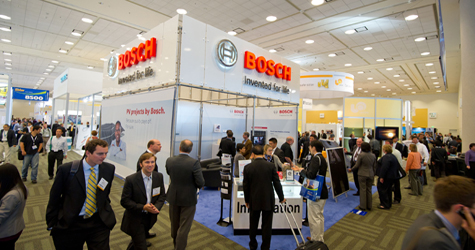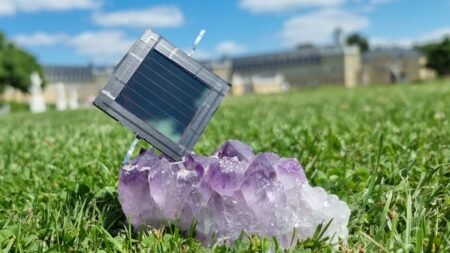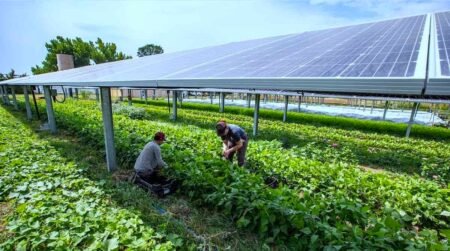he United Arab Emirates is pushing ahead with renewable energy investments to lower its dependence on natural gas imports as declining solar prices make projects more feasible, analysts said.
Last month, the UAE announced plans to invest USD 35 billion to diversify its energy resources for power generation. Energy Minister Suhail bin Mohammed al-Mazroui said the Gulf Arab state aims to decrease dependence on natural gas from around 100 percent of power generation now to 70 percent by 2021.
The UAE’s largest push in diversified energy supplies has been its USD 40 billion investment in civil nuclear energy, with one 1.4-gigawatt reactor planned to come online each year between 2017 and 2020, according to a report by the International Renewable Energy Agency (IRENA) and Masdar Institute published in April, ‘Remap 2020, A Renewable Energy Roadmap’.
For renewable energy, solar power has been the primary focus due to cost and resource availability. According to the report, local solar photovoltaic module prices have fallen around 75 percent since 2008, while natural gas prices have been rapidly increasing.
In January, Saudi Arabia’s ACWA Power and Spain’s TSK won the bid for the second phase of Dubai’s Mohammed bin Rashid al-Maktoum Solar Park after offering the lowest ever recorded cost for solar power.
“As soon as the vital information about solar competitive prices came from the market, the UAE tripled its renewable energy targets from 5 percent to 15 percent of its energy mix by 2030. And that’s a sign that the stakeholders have taken stock of the new economic reality,” Shihab El Borai, principal at PwC’s Strategy&, told Zawya in a telephone interview.
“The fact that solar energy makes economic sense now adds to the other targets set earlier on: to diversify the energy mix and reduce dependence on hydrocarbons , to introduce new technologies into the country and develop new skills,” he added.
More than 90 percent of the electricity produced in the UAE is generated by coal or gas-fired plants, and the UAE imports nearly all of its natural gas supply from Qatar under long-term contracts, according to Karen E. Young, senior resident scholar at the Washington-based Arab Gulf States Institute (AGSIW).
“Energy independence, at least from Qatari natural gas, might be seen as both a political and economic objective,” Young told Zawya in an email interview.
And solar technology is now being produced for a global market at comparable prices to traditional electricity plants, Young added, citing the recent pricing of Dubai’s solar park.
ENERGY REFORM
One of the main challenges facing the Middle East renewable energy sector in general are price distortions and energy subsidies that make it difficult for stakeholders to make investment decisions.
But the UAE has already moved to reform its energy subsidies system. In July, the UAE said it was shifting from a system of fixed, subsidised fuel prices to one of adjusting prices monthly in response to global trends. In January, Abu Dhabi emirate hiked electricity and water tariffs.
Electricity tariffs vary by emirate and are also differentiated between UAE nationals and expatriates. In Abu Dhabi, tariffs have been raised to AED 21 fils per kilowatt-hour across all sectors, while in Dubai and the northern emirates, the electricity tariff is based on consumption levels, according to the IRENA report.
Another challenge for large-scale solar projects in the region is the dust particles and humidity, but according to the IRENA report, research is being conducted to improve cleaning processes and surface-resistance to dust accumulation.
Meeting the country’s renewable energy targets will depend on government commitment to infrastructure investment, building new electricity plants and purchasing solar technology, according to Young.
“The more difficult targets will be diminishing variation in delivery of electricity throughout the federation, especially electricity distribution in Northern Emirates like Sharjah,” Young said.
“Ironically, a continued downward trend in the price of oil could discourage government spending in all kinds of infrastructure investment, including solar power.”
The head of Dubai Electricity and Water Authority (DEWA) said in remarks published this month that the standards, policies and regulations for solar energy use are ready for submission to the Dubai Executive Council, and that DEWA was now “going out strongly into the market”.
“This will boost confidence as declining solar prices make future projects more feasible,” CEO Saeed Mohammed Al Tayer was quoted as saying in local media.
The UAE could achieve at least 10 percent use of renewable energy in its energy mix by 2030, saving around USD 1.9 billion annually, according to a recent IRENA report. The country could also reduce CO2 emissions by 29 mega-tonnes per year, and reduce health and environmental costs by USD 1 billion-3.7 billion annually by 2030.
User Submitted Post: DRichter










